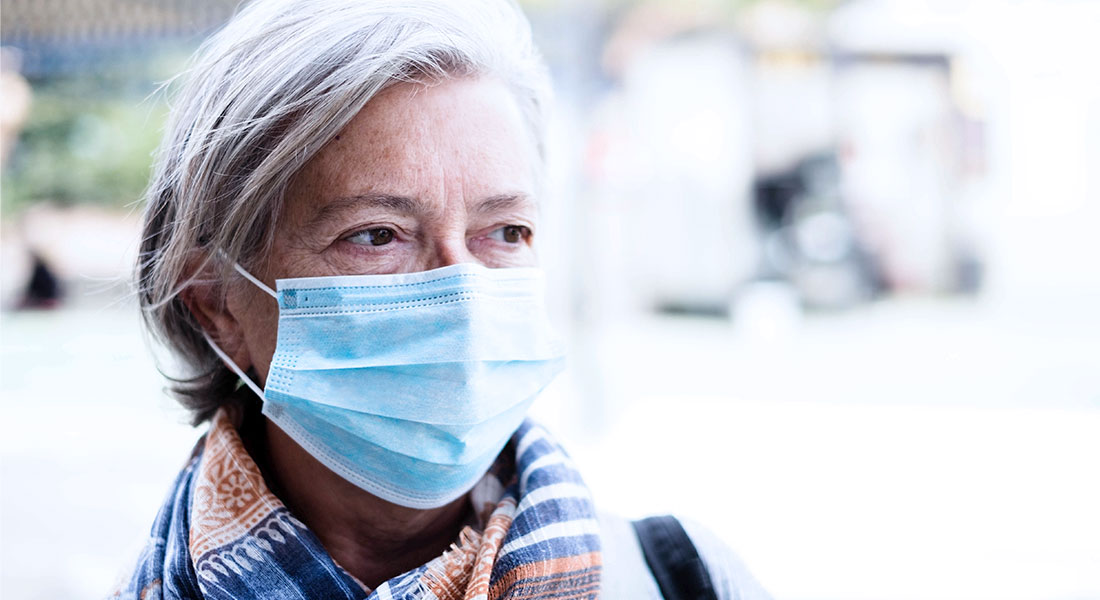 Contact
About Us
Articles
Home
Contact
About Us
Articles
Home

What a challenging time it has been, and the challenges aren’t over. COVID-19 affected everyone, but probably no group more than older Americans. As we know, nursing home residents were disproportionally affected, with COVID killing more than 184,000 nursing home and other long-term care residents and staff. The pandemic exposed long-standing infection control and staffing issues in nursing homes. The unfortunate consequence was the realization that this environment created the perfect storm for the infection to run rampant.
As the country went on lockdown, assisted living communities and nursing homes denied families the opportunity to visit, but more importantly, to see how loved ones were doing and advocate for their care.
As with all crises, perspectives change, and positive efforts emerge. There is little doubt that the senior living industry, families and older Americans have pivoted in creative and unexpected ways. The stress of the past year is not over, and families are still struggling to care for their loved ones and figure out the best path forward. Let’s look at some of the changes in senior living and care post-pandemic.
When families place a loved one in a nursing home, it is usually a last resort. For one thing, nursing homes are very expensive, with the median monthly cost in 2021 being $8,365 a year. And, in many parts of the country, that cost is much higher. Medicare does not pay for long-term nursing home care, only short-term skilled rehabilitation services.
The majority of people in nursing homes qualify for Medicaid, a low-income public health program. Qualifying for Medicaid means depleting assets, something most families want to avoid.
The other significant issue in nursing homes, pre-pandemic, is infection control. Poor infection control plagued the industry and contributed to the outbreak of COVID in these facilities. Most families did not realize this was a problem and other issues such as inadequate staffing and staff turnover were also contributors.
Add to these problems the heartbreaking inability to see loved ones during the pandemic, leading to reports of further decline of some residents. Some families removed their loved ones from nursing homes to care for them at home. This decision is not an easy one, and if a nursing home resident was on Medicaid, the costs of caring for someone at home could soar. Meanwhile, there is a discussion about how to improve the care in nursing homes by implementing these changes:
Social isolation and loneliness were problems for older Americans before the pandemic and were greatly exacerbated during it. Most senior living communities were on complete lockdown during the pandemic with meals, activities and visitation restrictions. The long-term health consequences of social isolation are well documented, and the duration of the pandemic has had a detrimental effect on seniors and their families. As was the case with nursing homes, some families opted to remove their loved ones from senior living communities either temporarily or permanently. Some of the changes we are seeing are the following:
In 2020 hospitals, nursing homes, and outpatient clinics saw a dramatic drop in visitations and admissions due to fears of infection. More families sought in-home care either through private caregiving agencies or insurance-covered home health. Even without the pandemic, an aging population will create a greater need for these services. Let’s look at what this means for families:
Over 53 million Americans provided unpaid care to someone in 2020. That alone is a significant issue, then came the pandemic. People of all ages and both genders give caregiving to a family member or friend, but more women are caregivers.
During the pandemic, women left the workforce to home school children and continue providing caregiving to an elder. The economic impact has been profound. Nearly 3 million women dropped out of the workforce in 2020. Many of these women are having difficulty getting back into employment. Even if they have a working partner, the financial consequences are affecting families. Caregiving is a national problem that needs dramatic changes.
During the pandemic, many older Americans either avoided outpatient health care visits or couldn’t access them. Welcome to telemedicine! Telehealth services grew by more than 4,000% in April of 2020. Telemedicine may be here to stay, assuming Medicare and other insurers continue to reimburse for it. Post-pandemic benefits and challenges are still being assessed:
To say that the senior living industry took a financial hit is an understatement. Families waited during the pandemic to admit loved ones to assisted living due to fears of infection and the restrictions on visitations. Some families moved their loved ones from assisted living and brought them home to live with them or placed them in apartments with in-home care. Although it appears that the assisted living industry is beginning to rebound, changes in thinking may have long-term ramifications:
There might be pent-up demand for assisted living now that communities are opening up visitation and returning to normal. Families might be seeing that supporting their loved ones at home is more stressful and expensive than anticipated.
Most assisted living communities are monthly rental situations. But then there is the active 55-plus market where seniors buy into a community. More of these communities are offering rentals as an alternative to buying. Other developments such as UpsideHoM are using existing apartment buildings to rent to seniors with multigenerational residents. Additional services are available for monthly add-on pricing. Here are some considerations as this market continues to grow:
Sometimes a crisis is needed to get people thinking in more creative ways. Costs of housing are a concern regardless of age. Seniors are starting to consider other housing ideas that offer community but reduce costs.

One part of advanced planning is the process of establishing powers of attorney for health care and financial matters. But it also involves looking at future care and housing options and the costs associated with those options. The pandemic proved that the unexpected could happen. No one can plan for every potential crisis, but taking stock of your estate and making adjustments will go a long way to reducing stress later.
As we come to terms with this unprecedented event, families have endured a tragic loss of life. For those who made it through, there remains a significant fall-out from the effects of COVID. The pandemic has focused on seniors and the families that care for them in ways most of us weren’t prepared for. But, at the same time, it has provided an opportunity to improve care, create more affordable and creative housing options and encourage families to plan for the future.
Alliance America is an insurance and financial services company dedicated to the art of personal financial planning. Our financial professionals can assist you in maximizing your retirement resources and achieving your future goals. We have access to an array of products and services, all focused on helping you enjoy the retirement lifestyle you want and deserve. You can request a no-cost, no-obligation consultation by calling (833) 219-6884 today.


